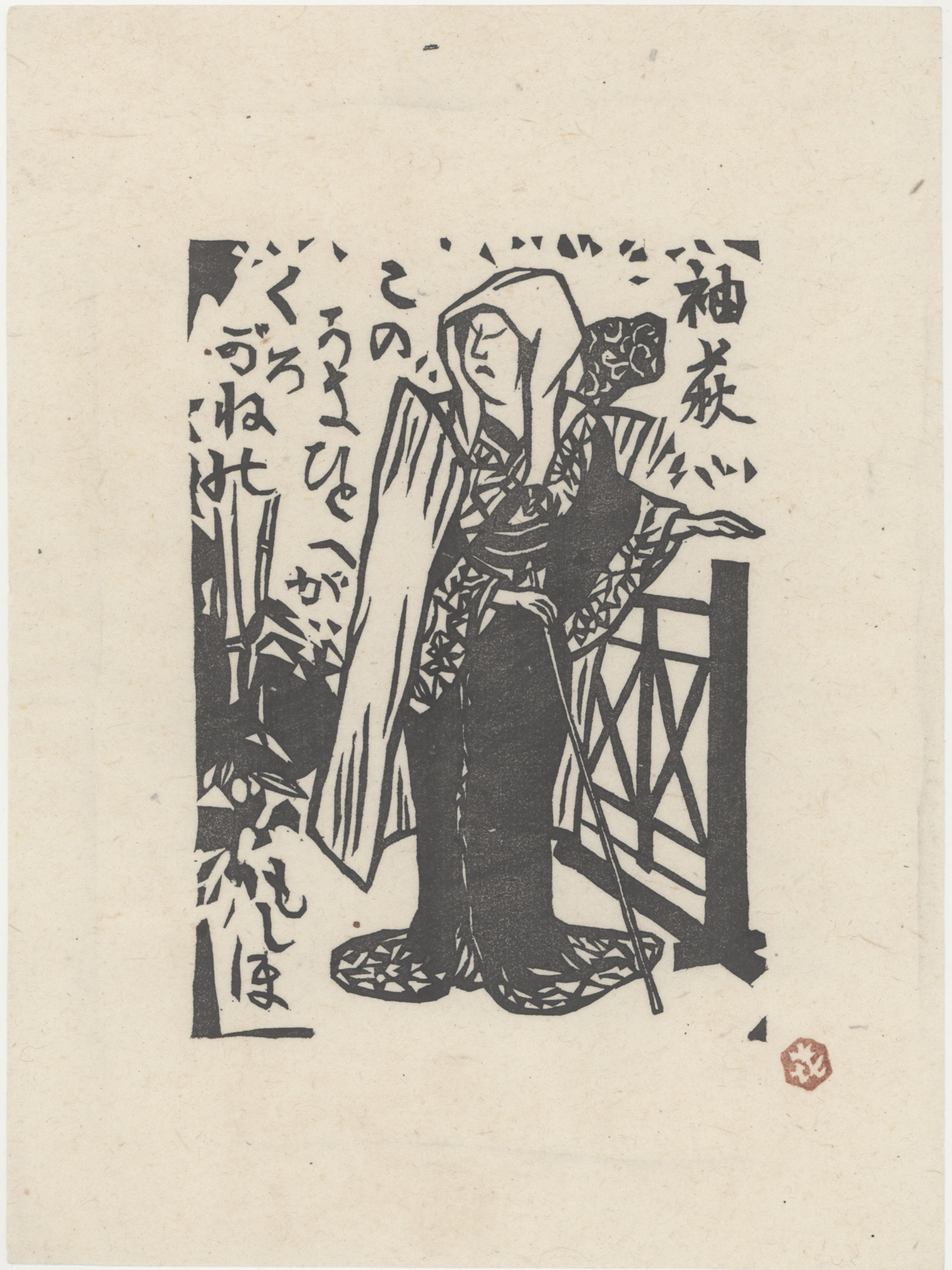About This Print
This print depicts the blind beggar Sodehagi in act III, Sodehagi saemon, from the kabuki drama Ōshū Adachi-ga-Hara. The role of Sodehagi is played by the actor NakamuraMoshiho IV 中村もしほ(4代目).Chikamatsu Hanji's play in five acts Ōshū Adachi-ga-Hara (奥州安達原) was originally written for the puppet theater in 1762. It was adapted for kabuki in February 1763 and staged at the Moritaza.
The historical background of this play is the zenkunen war, which pitted the Abe clan, ruler of the northern provinces of Japan (Ōshū), against the Minamoto clan. The Minamoto clan, led by Minamoto no Yoriyoshi and his son Minamoto no Yoshiie, defeated the Abe clan, led by Abe no Yoritoki and his two sons, Abe no Sadatō and Abe no Munetō. After the war, the two sons became fugitives and the play is about their actions and their last attempts to take their revenge against Minamoto.
"Sodehagi Saimon" is the final scene of the third act of Ōshū Adachi-ga-Hara. Sodehagi was disinherited from her samurai family at age sixteen because of an illicit love affair. She becomes a blind, wandering beggar searching for her lost lover, Kurosawa Sachū, her out-of-wedlock little girl by her side. She comes to the home of her father, Kenjō Naotaka, and stands outside, playing the shamisen and signing a prayerful song asking for forgiveness, but he refuses to listen. The situation is complicated by her father having been ordered to commit suicide and by the arrival of the imperial messenger, Sodehagi's long-lost love. The father, Naotaka, commits seppuku and Sodehagi kills herself to wipe away her shame.
The Actors in the Print
Print Details
| IHL Catalog | #1381 |
| Title | Nakamura Moshiho IV as Sodehagi in Sodehagi Saimon at the Mitsukoshi Theater |
| Series | Mitsukoshi Kabuki Hanga 三越歌舞伎版画 [untitled series of prints for the Mitsukoshi Theater 1948 and 1949 kabuki seasons] |
| Artist | Sasajima Kihei (1906-1993) |
| Signature | not signed |
| Seal |  |
| Publication Date | 1949 |
| Publisher | likely Mitsukoshi Gekijō or the artist |
| Carver | self-carved |
| Impression | excellent |
| Colors | excellent |
| Condition | excellent - minor handling/printing creases |
| Genre | sosaku hanga; kabuki-ga |
| Miscellaneous | |
| Format | |
| H x W Paper | 9 3/8 x 7 in. (23.8 x 17.8 cm) |
| H x W Image | 7 x 5 15/16 in. (17.8 x 15.1 cm) |
| Collections This Print | |
| Reference Literature |


